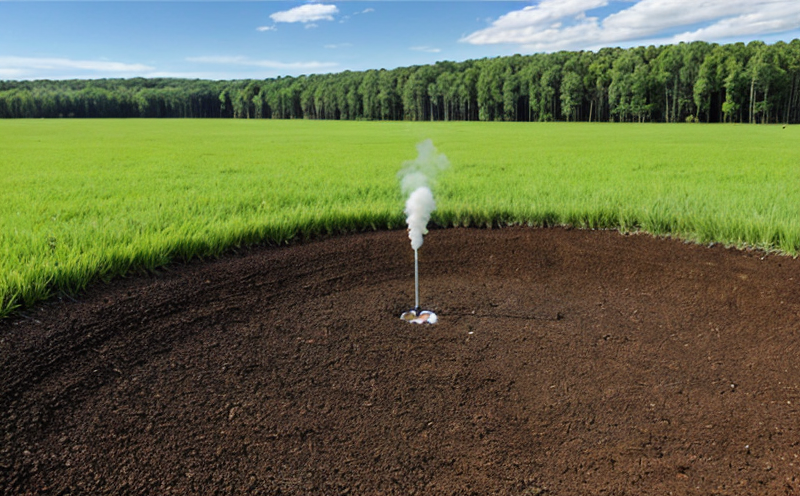EPA 200.8 Metals in Mining Waters by ICP MS Testing
The EPA Method 200.8 is a widely recognized procedure for the determination of metals in mining waters using Inductively Coupled Plasma Mass Spectrometry (ICP-MS). This method ensures accurate and precise quantification of trace metals, which are critical for environmental impact assessments and compliance with regulatory standards.
The primary objective of EPA 200.8 is to provide a reliable analytical platform for the assessment of metal contamination in surface waters associated with mining activities. The test helps identify potential environmental risks posed by various heavy metals such as copper, zinc, lead, cadmium, and mercury. These metals can have detrimental effects on aquatic ecosystems and human health if not managed properly.
The testing process typically involves the collection of water samples from mine sites followed by thorough sample preparation. This includes filtering, digestion using strong acids like nitric acid or perchloric acid to break down complex compounds into simpler forms, and dilution when necessary to ensure accurate measurement within the instrument's linear range.
For optimal results, it is crucial that all laboratory personnel handling these samples are trained in proper techniques for minimizing contamination. After preparation, the samples are introduced into an ICP-MS system where they undergo atomization, ionization, and mass analysis to detect individual metal ions at extremely low concentrations.
The equipment used in this process includes high-quality peristaltic pumps for sample introduction, robust nebulizers capable of efficiently converting liquid samples into aerosols suitable for the plasma source, along with a quadrupole mass analyzer designed specifically for separating different isotopes based on their atomic masses. The precision and accuracy achieved by this setup make it an ideal choice for regulatory compliance testing.
- Sample Preparation: Thoroughly cleaned and validated equipment is essential to prevent cross-contamination between samples.
- Data Analysis: Advanced software packages assist in interpreting complex spectral data, ensuring accurate quantification of each metal species present.
The results obtained from EPA 200.8 are reported against established limits set forth by regulatory bodies like the United States Environmental Protection Agency (EPA). Compliance with these standards is vital for maintaining sustainable mining practices and protecting both natural environments and public health.
In conclusion, adopting EPA Method 200.8 for metals analysis in mining waters provides valuable insights into metal contamination levels, supporting informed decision-making processes aimed at reducing adverse impacts on ecosystems and communities affected by mining operations.
Why Choose This Test
Selecting EPA Method 200.8 for metals testing in mining waters offers several advantages over other analytical methods. One key benefit is its ability to detect trace amounts of metals down to parts per billion (ppb), making it particularly suitable for identifying low-level contamination that might otherwise go unnoticed.
The method's high sensitivity enables precise quantification, which is essential for meeting stringent environmental regulations and ensuring compliance with international standards such as ISO 17025. This ensures that analytical laboratories adhering to this protocol deliver accurate results consistently.
Another advantage lies in its versatility; EPA 200.8 can be adapted to analyze various types of water samples from different sources, including surface waters, groundwaters, and effluents discharged by mining facilities. This flexibility allows for comprehensive assessments across diverse operational environments within the industry.
The robustness of ICP-MS technology contributes significantly to the reliability of this testing approach. The instrument's capability to handle complex matrices without interference makes it well-suited for real-world applications where sample conditions may vary widely. Additionally, automated data processing features streamline result interpretation, reducing human error and enhancing efficiency.
Compliance with EPA Method 200.8 not only helps mining companies meet regulatory requirements but also fosters trust among stakeholders by demonstrating a commitment to responsible environmental stewardship. By adhering to these rigorous testing protocols, organizations can enhance their reputation while safeguarding the integrity of the natural environment.
Moreover, choosing this test ensures compatibility with global standards recognized for their accuracy and precision. This consistency across borders facilitates international collaboration on environmental issues related to mining activities.
Quality and Reliability Assurance
- Sophisticated Instrumentation: Utilization of state-of-the-art ICP-MS equipment guarantees consistent performance and reliability throughout the analytical process.
- Strict Quality Control Measures: Regular calibration checks, method validation exercises, and internal audits ensure adherence to strict quality standards.
The laboratory adheres strictly to established procedures outlined in ISO 17025, which mandates continuous improvement in technical capabilities and operational management systems. These rigorous practices contribute significantly towards maintaining the highest level of scientific integrity and reliability in all analytical services provided.
Furthermore, our team comprises highly skilled professionals certified by relevant bodies, ensuring expertise across various aspects of EPA 200.8 testing. Their extensive experience allows them to address challenging cases effectively while adhering strictly to best practices recommended by international standards like ISO and ASTM.
Our commitment extends beyond mere compliance with regulatory requirements; we actively participate in collaborative research initiatives aimed at advancing scientific understanding within the field of environmental impact assessment through mining activities. By doing so, we contribute towards setting new benchmarks for excellence in this area.
International Acceptance and Recognition
- Global Standards: EPA Method 200.8 is harmonized with international standards such as ISO/IEC, providing broad acceptance across borders.
- Absence of Interpretational Ambiguities: Clear and unambiguous guidelines ensure consistent interpretation worldwide, eliminating potential discrepancies in results due to varying methodologies or approaches.
The widespread adoption of EPA 200.8 reflects its reliability and effectiveness as a tool for environmental monitoring. Its recognition by regulatory authorities globally underscores the importance placed on this method within the scientific community.
Moreover, the harmonization with international standards ensures that results obtained from this test are universally applicable, facilitating seamless communication among stakeholders operating in diverse geographical locations. This interoperability enhances cooperation between countries engaged in cross-border mining projects or sharing resources related to environmental management.
In summary, the international acceptance and recognition of EPA 200.8 underscore its significance as a cornerstone for reliable metal analysis in mining waters. By leveraging this standardized approach, stakeholders can confidently rely on consistent, accurate data when making critical decisions regarding environmental protection measures implemented at mine sites worldwide.





